Sat Mag
Democracy and Sri Lanka’s middle-class

By Uditha Devapriya
Speaking at the launch of the 43 Senankaya, a month or so ago, Champika Ranawaka bemoaned the way voters, particularly young voters, view politicians today. “We saw this clearly when MPs began contracting the virus,” he observed. “The first reaction on social media, and elsewhere, was: when will the virus invade Parliament? When will it help us get rid of those in Parliament?” This, Ranawaka pointed out, had a lot to do with how politicians have congealed into a distinct class of their own, insulated from the public and hardly receptive to it. He went on to observe, however, that inasmuch as family bandyism – the Rajapaksas, but also the Senanayakes, the Bandaranaikes, perhaps even the Premadasas – has contributed to the disjuncture between the voter and the voted, it is hardly fair to hold every politician to account.
Ranawaka was obviously insulating himself from the backlash generated on social media against the much condemned, much vilified 225. But his observation seems, at least to me, a tad superficial. True, family bandyism has damaged relations between people and representatives. True, corruption did not begin with the present batch of parliamentarians, and it will not end with that batch. Yet whereas Ranawaka couches the problem – the gulf between citizenry and legislature – purely in terms of political corruption, I feel it must be viewed from another vantage point.
To put it simply, the problem is not with politicians alone. I know this is not the most popular thing to say, but it’s true. The issue that Ranawaka identifies goes far beyond voters wishing a coronavirus pox on all politicians; it goes all the way back to the backlash of disenchantment generated by the yahapalana government, to what voters saw as the failures of that regime. It wasn’t a case of voters wishing politicians away only; it was a case of voters wishing the idea of politics away.
Ranawaka may not have realised it, but the pox-on-all-politicos curse happens to be a symptom of a more serious problem: the highly educated, professional, urban if not suburban middle-class – which he is targeting – envisions a polity free of politics, and wishes politicians out of the system. There are two broad reasons for this: the excesses of the populists, and the failures of the reformists.
I realise I’m engaging in stereotypes here, but that is because the people I have talked with, and the sentiments they express, tend to conform to such stereotypes. Ranawaka aims at a predominantly Sinhala middle-class that’s a lower-middle class version of the Viyathmaga and Eliya (V-E) coterie; Sajith Premadasa’s Buddhi Mandapaya aims at the same thing, only with a less preponderant Sinhala presence. In other words, as with the V-E coterie, both 43 Senankaya and Buddhi Mandapaya target the same class of professionals whose electorates have generated that backlash against politics, politicians, and more importantly, the idea of politics.
I am tempted to call this milieu Sri Lanka’s middle-class, but then I realise there is not just one middle-class. In an essay written in 1975, the Marxist historian Arno J. Mayer drew a distinction between different layers of what he identified as the lower middle-class: petty independent producers, merchants, and service operatives on the one hand, and petty dependent clerks, managers, and technicians on the other, in addition to teachers, professors, lawyers, or put simply, professionals. As far as the Sri Lankan middle-class’s run-ins with politicians are concerned, it is these groups, particularly the professionals, who count. My contention, which may be controversial to some, is that as much as they count, they are not adequate for a national political programme, democratic or otherwise.
Why do I say this?
 The issue with these groups and milieus is not that they are right about politicians – that they tend to rob, pilfer, piddle, waste taxpayers’ money, hang on to power, and so on – but rather that they are half-right about the bulk of them. They are correct in their diagnosis: of course politicians rob, of course they hang on to power, of course they are corrupt, and of course they corrupt others.
The issue with these groups and milieus is not that they are right about politicians – that they tend to rob, pilfer, piddle, waste taxpayers’ money, hang on to power, and so on – but rather that they are half-right about the bulk of them. They are correct in their diagnosis: of course politicians rob, of course they hang on to power, of course they are corrupt, and of course they corrupt others.
But though correct in their diagnosis, they are wrong in their recommendation. Put simply, they want a polity free of politics. This is unrealistic, something no country in the world has tried out. Yet like a mantra, it has caught on. Disgust with politicians, which in other states has served to reform politics, has served here to turn the most educated, urbanised, and suburbanised setions to an aversion to politics. The call to get rid of the 225 is one symptom of that malaise; the call to replace them with a set of experts is another. Not surprisingly, against that backdrop, the middle-class sees itself in much the same way the one-eyed see themselves in the land of the blind: not only averse to politics, but also superior to, and above, it.
My problem with this approach to politics is that it does not sit in well with certain tenets of democracy, and more worryingly, with a pluralist conception of democracy. This belies another major problem, relevant to the issue at hand.
One of the most enduring myths about democratisation in countries like ours is that the middle-class should play a leading role. Much of the literature on the role of the middle-class in democratisation, even in these parts of the world, focuses on the link between economic aspiration and political reform. This “structural linkage” assumes that as an economy develops, authoritarianism will wither away, thanks to the rise of an educated, professional, meritocratic milieu.
Although the evidence collected thus far is not enough to establish this view as a fact, the assumption has been accepted as such for more than half a century. It traces its origins to the influential work of Seymour M. Lipset, who saw economic growth as a precondition of democratisation and argued that far from fostering liberalisation, the working class served to obstruct it. For him, the class most benefitted from growth, which would by default stand up for democracy, was the middle-class.
Lipset’s observation suffers from two limitations. The first is obvious: it’s limited, for the most, to the experience of Western liberal democracies of the mid-20th century. To put it simply, it is limited by time, space, and historical context. The second is as significant: it endorses a centre-right, anti-working class position. In other words, not only is his study contextually limited, it is also shaped by ideological convictions. But Lipset’s hypotheses about the link between middle-class aspiration and political liberalisation have been and continues to be taken at face value by scholars, activists, and NGOs the world over, from New York to New Delhi.
Even those who have pointed out Lipset’s contextual and ideological biases tend to harbour contextual and ideological biases of their own. Much of the work which provides an alternative account of middle-class involvement in democratisation focuses on the East Asian and South-East Asian experience. At first glance, the shift to this region makes sense: the transition from Third World to First in the economies of Singapore, Japan, South Korea, and even Taiwan did not mirror a transition from autocracy to democracy. Indeed, as Lee Kuan Yew once put it to Fergus Bordewich, political autocracy and one-party rule encouraged Singapore’s middle bourgeoisie to favour honest government over party politics.
But Sri Lanka is not Singapore, just as Singapore is not the US. The dynamics and the optics are different. It is imperative to account for such optics if we are to formulate a proper account of whether, and to what extent, middle-class growth in the country has widened democracy. An alternative account of their relationship with democracy, indeed their conception of it, must hence be formulated.
At the risk of simplifying a complex reality, I see Sri Lanka’s middle-class as making two demands: less taxation, and more representation. To explain more clearly: less taxation in the form of cheaper food prices, fewer import tariffs, and fewer barriers to trade; and more representation in the form of greater state accountability and greater access to public goods, i.e. the best hospitals, the best schools, institutions to which the middle-class can get access only by bribing officials. How contradictory these two goals are can be seen in how, if they are met almost exclusively in favour of a middle-class, they tend to exclude or marginalise other social groups. Resources, after all, are not unlimited, and even in a context where tax revenues are not diminishing (as they are in Sri Lanka), it will prove to be difficult for a policymaker to, say, reduce import restrictions to benefit an aspiring middle-class without cutting down on welfare payments to the poorest in order to offset resultant losses in state revenue. And yet, far from concerning the middle-class, the point that the state can cater to them only at the cost of welfare to other classes seems to have escaped them.
One example will suffice to illustrate my point. Not too long ago, the government allocated space to an agitation zone near Galle Face where trade unions and activists could gather and yell and holler to their hearts’ content without obstructing traffic. Of course, to limit dissent to a demarcated zone cannot be considered very open, for that matter very democratic. Yet for middle-class democrats, excluding a group other than their own – a group they generally detest because the protests they hold tend to obtrude on their routines – did not seem a problem; indeed, far from bemoaning it, vast sections of this milieu appeared to welcome it on social media.
For these middle-class types, then, family bandyism remains a problem; corruption too; taxes on imported cars, certainly. But stopping protests from spreading out to the roads? Not by a long shot. Therein lies the dilemma at the heart of this class: they want democracy, they want representation, they want honest government. Yet they also want, and desire for, a polity free of politics. The issue is that this polity appears less a democratic Utopia than an entrenched oligarchy: one that substitutes rule by middle-class philosopher-kings for rule by populist family cartels.
Whether that is something we should want is a question civil society must ask itself seriously. To me the solution is simple: to usher in a democracy free of private and public corruption, civil society must engage in mobilising other classes. In a word, it must be inclusive, participatory, and broad, rather than be reliant on professionals, idealists, and petty anti-regimists. The sooner civil society realises this, the easier it will be to come up with a truly national political programme: one that addresses the concerns of marginalised minorities, ethnic and economic. With a middle-class that aspires to the ranks of a compradorist bourgeoisie, such a programme will probably never materialise. For that we must look elsewhere, to other classes.
The writer can be reached at udakdev1@gmail.com
Sat Mag
October 13 at the Women’s T20 World Cup: Injury concerns for Australia ahead of blockbuster game vs India
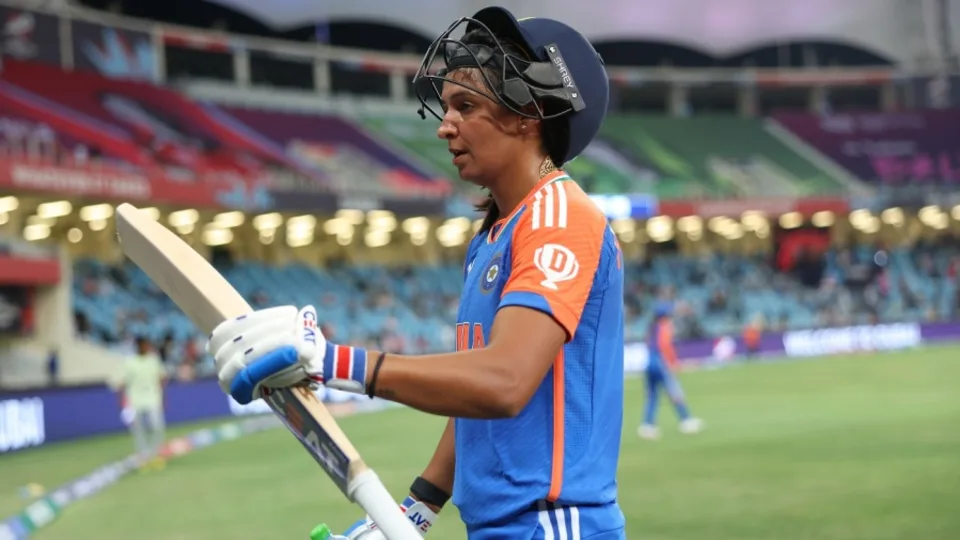
Australia vs India
Sharjah, 6pm local time
Australia have major injury concerns heading into the crucial clash. Just four balls into the match against Pakistan, Tayla Vlaeminck was out with a right shoulder dislocation. To make things worse, captain Alyssa Healy suffered an acute right foot injury while batting on 37 as she hobbled off the field with Australia needing 14 runs to win. Both players went for scans on Saturday.
India captain Harmanpreet Kaur who had hurt her neck in the match against Pakistan, turned up with a pain-relief patch on the right side of her neck during the Sri Lanka match. She also didn’t take the field during the chase. Fast bowler Pooja Vastrakar bowled full-tilt before the Sri Lanka game but didn’t play.
India will want a big win against Australia. If they win by more than 61 runs, they will move ahead of Australia, thereby automatically qualifying for the semi-final. In a case where India win by fewer than 60 runs, they will hope New Zealand win by a very small margin against Pakistan on Monday. For instance, if India make 150 against Australia and win by exactly 10 runs, New Zealand need to beat Pakistan by 28 runs defending 150 to go ahead of India’s NRR. If India lose to Australia by more than 17 runs while chasing a target of 151, then New Zealand’s NRR will be ahead of India, even if Pakistan beat New Zealand by just 1 run while defending 150.
Overall, India have won just eight out of 34 T20Is they’ve played against Australia. Two of those wins came in the group-stage games of previous T20 World Cups, in 2018 and 2020.
Australia squad:
Alyssa Healy (capt & wk), Darcie Brown, Ashleigh Gardner, Kim Garth, Grace Harris, Alana King, Phoebe Litchfield, Tahlia McGrath, Sophie Molineux, Beth Mooney, Ellyse Perry, Megan Schutt, Annabel Sutherland, Tayla Vlaeminck, Georgia Wareham
India squad:
Harmanpreet Kaur (capt), Smriti Mandhana (vice-capt), Yastika Bhatia (wk), Shafali Verma, Deepti Sharma, Jemimah Rodrigues, Richa Ghosh (wk), Pooja Vastrakar, Arundhati Reddy, Renuka Singh, D Hemalatha, Asha Sobhana, Radha Yadav, Shreyanka Patil, S Sajana
Tournament form guide:
Australia have three wins in three matches and are coming into this contest having comprehensively beaten Pakistan. With that win, they also all but sealed a semi-final spot thanks to their net run rate of 2.786. India have two wins in three games. In their previous match, they posted the highest total of the tournament so far – 172 for 3 and in return bundled Sri Lanka out for 90 to post their biggest win by runs at the T20 World Cup.
Players to watch:
Two of their best batters finding their form bodes well for India heading into the big game. Harmanpreet and Mandhana’s collaborative effort against Pakistan boosted India’s NRR with the semi-final race heating up. Mandhana, after a cautious start to her innings, changed gears and took on Sri Lanka’s spinners to make 50 off 38 balls. Harmanpreet, continuing from where she’d left against Pakistan, played a classic, hitting eight fours and a six on her way to a 27-ball 52. It was just what India needed to reinvigorate their T20 World Cup campaign.
[Cricinfo]
Sat Mag
Living building challenge

By Eng. Thushara Dissanayake
The primitive man lived in caves to get shelter from the weather. With the progression of human civilization, people wanted more sophisticated buildings to fulfill many other needs and were able to accomplish them with the help of advanced technologies. Security, privacy, storage, and living with comfort are the common requirements people expect today from residential buildings. In addition, different types of buildings are designed and constructed as public, commercial, industrial, and even cultural or religious with many advanced features and facilities to suit different requirements.
We are facing many environmental challenges today. The most severe of those is global warming which results in many negative impacts, like floods, droughts, strong winds, heatwaves, and sea level rise due to the melting of glaciers. We are experiencing many of those in addition to some local issues like environmental pollution. According to estimates buildings account for nearly 40% of all greenhouse gas emissions. In light of these issues, we have two options; we change or wait till the change comes to us. Waiting till the change come to us means that we do not care about our environment and as a result we would have to face disastrous consequences. Then how can we change in terms of building construction?
Before the green concept and green building practices come into play majority of buildings in Sri Lanka were designed and constructed just focusing on their intended functional requirements. Hence, it was much likely that the whole process of design, construction, and operation could have gone against nature unless done following specific regulations that would minimize negative environmental effects.
We can no longer proceed with the way we design our buildings which consumes a huge amount of material and non-renewable energy. We are very concerned about the food we eat and the things we consume. But we are not worrying about what is a building made of. If buildings are to become a part of our environment we have to design, build and operate them based on the same principles that govern the natural world. Eventually, it is not about the existence of the buildings, it is about us. In other words, our buildings should be a part of our natural environment.
The living building challenge is a remarkable design philosophy developed by American architect Jason F. McLennan the founder of the International Living Future Institute (ILFI). The International Living Future Institute is an environmental NGO committed to catalyzing the transformation toward communities that are socially just, culturally rich, and ecologically restorative. Accordingly, a living building must meet seven strict requirements, rather certifications, which are called the seven “petals” of the living building. They are Place, Water, Energy, Equity, Materials, Beauty, and Health & Happiness. Presently there are about 390 projects around the world that are being implemented according to Living Building certification guidelines. Let us see what these seven petals are.
Place
This is mainly about using the location wisely. Ample space is allocated to grow food. The location is easily accessible for pedestrians and those who use bicycles. The building maintains a healthy relationship with nature. The objective is to move away from commercial developments to eco-friendly developments where people can interact with nature.
Water
It is recommended to use potable water wisely, and manage stormwater and drainage. Hence, all the water needs are captured from precipitation or within the same system, where grey and black waters are purified on-site and reused.
Energy
Living buildings are energy efficient and produce renewable energy. They operate in a pollution-free manner without carbon emissions. They rely only on solar energy or any other renewable energy and hence there will be no energy bills.
Equity
What if a building can adhere to social values like equity and inclusiveness benefiting a wider community? Yes indeed, living buildings serve that end as well. The property blocks neither fresh air nor sunlight to other adjacent properties. In addition, the building does not block any natural water path and emits nothing harmful to its neighbors. On the human scale, the equity petal recognizes that developments should foster an equitable community regardless of an individual’s background, age, class, race, gender, or sexual orientation.
Materials
Materials are used without harming their sustainability. They are non-toxic and waste is minimized during the construction process. The hazardous materials traditionally used in building components like asbestos, PVC, cadmium, lead, mercury, and many others are avoided. In general, the living buildings will not consist of materials that could negatively impact human or ecological health.
Beauty
Our physical environments are not that friendly to us and sometimes seem to be inhumane. In contrast, a living building is biophilic (inspired by nature) with aesthetical designs that beautify the surrounding neighborhood. The beauty of nature is used to motivate people to protect and care for our environment by connecting people and nature.
Health & Happiness
The building has a good indoor and outdoor connection. It promotes the occupants’ physical and psychological health while causing no harm to the health issues of its neighbors. It consists of inviting stairways and is equipped with operable windows that provide ample natural daylight and ventilation. Indoor air quality is maintained at a satisfactory level and kitchen, bathrooms, and janitorial areas are provided with exhaust systems. Further, mechanisms placed in entrances prevent any materials carried inside from shoes.
The Bullitt Center building
Bullitt Center located in the middle of Seattle in the USA, is renowned as the world’s greenest commercial building and the first office building to earn Living Building certification. It is a six-story building with an area of 50,000 square feet. The area existed as a forest before the city was built. Hence, the Bullitt Center building has been designed to mimic the functions of a forest.
The energy needs of the building are purely powered by the solar system on the rooftop. Even though Seattle is relatively a cloudy city the Bullitt Center has been able to produce more energy than it needed becoming one of the “net positive” solar energy buildings in the world. The important point is that if a building is energy efficient only the area of the roof is sufficient to generate solar power to meet its energy requirement.
It is equipped with an automated window system that is able to control the inside temperature according to external weather conditions. In addition, a geothermal heat exchange system is available as the source of heating and cooling for the building. Heat pumps convey heat stored in the ground to warm the building in the winter. Similarly, heat from the building is conveyed into the ground during the summer.
The potable water needs of the building are achieved by treating rainwater. The grey water produced from the building is treated and re-used to feed rooftop gardens on the third floor. The black water doesn’t need a sewer connection as it is treated to a desirable level and sent to a nearby wetland while human biosolid is diverted to a composting system. Further, nearly two third of the rainwater collected from the roof is fed into the groundwater and the process resembles the hydrologic function of a forest.
It is encouraging to see that most of our large-scale buildings are designed and constructed incorporating green building concepts, which are mainly based on environmental sustainability. The living building challenge can be considered an extension of the green building concept. Amanda Sturgeon, the former CEO of the ILFI, has this to say in this regard. “Before we start a project trying to cram in every sustainable solution, why not take a step outside and just ask the question; what would nature do”?
Sat Mag
Something of a revolution: The LSSP’s “Great Betrayal” in retrospect
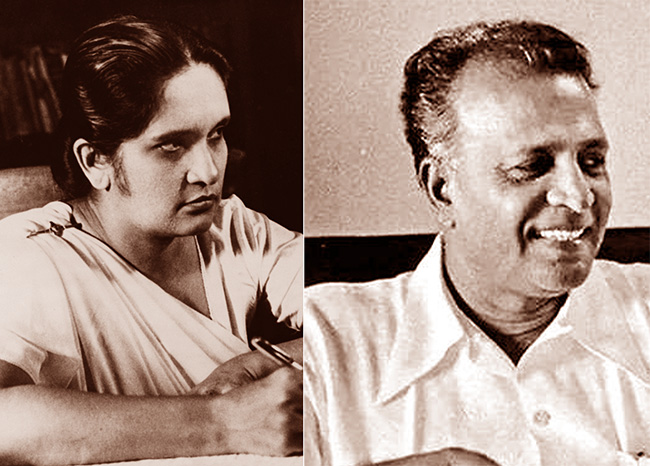
By Uditha Devapriya
On June 7, 1964, the Central Committee of the Lanka Sama Samaja Party convened a special conference at which three resolutions were presented. The first, moved by N. M. Perera, called for a coalition with the SLFP, inclusive of any ministerial portfolios. The second, led by the likes of Colvin R. de Silva, Leslie Goonewardena, and Bernard Soysa, advocated a line of critical support for the SLFP, but without entering into a coalition. The third, supported by the likes of Edmund Samarakkody and Bala Tampoe, rejected any form of compromise with the SLFP and argued that the LSSP should remain an independent party.
The conference was held a year after three parties – the LSSP, the Communist Party, and Philip Gunawardena’s Mahajana Eksath Peramuna – had founded a United Left Front. The ULF’s formation came in the wake of a spate of strikes against the Sirimavo Bandaranaike government. The previous year, the Ceylon Transport Board had waged a 17-day strike, and the harbour unions a 60-day strike. In 1963 a group of working-class organisations, calling itself the Joint Committee of Trade Unions, began mobilising itself. It soon came up with a common programme, and presented a list of 21 radical demands.
In response to these demands, Bandaranaike eventually supported a coalition arrangement with the left. In this she was opposed, not merely by the right-wing of her party, led by C. P. de Silva, but also those in left parties opposed to such an agreement, including Bala Tampoe and Edmund Samarakkody. Until then these parties had never seen the SLFP as a force to reckon with: Leslie Goonewardena, for instance, had characterised it as “a Centre Party with a programme of moderate reforms”, while Colvin R. de Silva had described it as “capitalist”, no different to the UNP and by default as bourgeois as the latter.
The LSSP’s decision to partner with the government had a great deal to do with its changing opinions about the SLFP. This, in turn, was influenced by developments abroad. In 1944, the Fourth International, which the LSSP had affiliated itself with in 1940 following its split with the Stalinist faction, appointed Michel Pablo as its International Secretary. After the end of the war, Pablo oversaw a shift in the Fourth International’s attitude to the Soviet states in Eastern Europe. More controversially, he began advocating a strategy of cooperation with mass organisations, regardless of their working-class or radical credentials.
Pablo argued that from an objective perspective, tensions between the US and the Soviet Union would lead to a “global civil war”, in which the Soviet Union would serve as a midwife for world socialist revolution. In such a situation the Fourth International would have to take sides. Here he advocated a strategy of entryism vis-à-vis Stalinist parties: since the conflict was between Stalinist and capitalist regimes, he reasoned, it made sense to see the former as allies. Such a strategy would, in his opinion, lead to “integration” into a mass movement, enabling the latter to rise to the level of a revolutionary movement.

Though controversial, Pablo’s line is best seen in the context of his times. The resurgence of capitalism after the war, and the boom in commodity prices, had a profound impact on the course of socialist politics in the Third World. The stunted nature of the bourgeoisie in these societies had forced left parties to look for alternatives. For a while, Trotsky had been their guide: in colonial and semi-colonial societies, he had noted, only the working class could be expected to see through a revolution. This entailed the establishment of workers’ states, but only those arising from a proletarian revolution: a proposition which, logically, excluded any compromise with non-radical “alternatives” to the bourgeoisie.
To be sure, the Pabloites did not waver in their support for workers’ states. However, they questioned whether such states could arise only from a proletarian revolution. For obvious reasons, their reasoning had great relevance for Trotskyite parties in the Third World. The LSSP’s response to them showed this well: while rejecting any alliance with Stalinist parties, the LSSP sympathised with the Pabloites’ advocacy of entryism, which involved a strategic orientation towards “reformist politics.” For the world’s oldest Trotskyite party, then going through a series of convulsions, ruptures, and splits, the prospect of entering the reformist path without abandoning its radical roots proved to be welcoming.
Writing in the left-wing journal Community in 1962, Hector Abhayavardhana noted some of the key concerns that the party had tried to resolve upon its formation. Abhayavardhana traced the LSSP’s origins to three developments: international communism, the freedom struggle in India, and local imperatives. The latter had dictated the LSSP’s manifesto in 1936, which included such demands as free school books and the use of Sinhala and Tamil in the law courts. Abhayavardhana suggested, correctly, that once these imperatives changed, so would the party’s focus, though within a revolutionary framework. These changes would be contingent on two important factors: the establishment of universal franchise in 1931, and the transfer of power to the local bourgeoisie in 1948.
Paradoxical as it may seem, the LSSP had entered the arena of radical politics through the ballot box. While leading the struggle outside parliament, it waged a struggle inside it also. This dual strategy collapsed when the colonial government proscribed the party and the D. S. Senanayake government disenfranchised plantation Tamils. Suffering two defeats in a row, the LSSP was forced to think of alternatives. That meant rethinking categories such as class, and grounding them in the concrete realities of the country.
This was more or less informed by the irrelevance of classical and orthodox Marxian analysis to the situation in Sri Lanka, specifically to its rural society: with a “vast amorphous mass of village inhabitants”, Abhayavardhana observed, there was no real basis in the country for a struggle “between rich owners and the rural poor.” To complicate matters further, reforms like the franchise and free education, which had aimed at the emancipation of the poor, had in fact driven them away from “revolutionary inclinations.” The result was the flowering of a powerful rural middle-class, which the LSSP, to its discomfort, found it could not mobilise as much as it had the urban workers and plantation Tamils.
Where else could the left turn to? The obvious answer was the rural peasantry. But the rural peasantry was in itself incapable of revolution, as Hector Abhayavardhana has noted only too clearly. While opposing the UNP’s Westernised veneer, it did not necessarily oppose the UNP’s overtures to Sinhalese nationalism. As historians like K. M. de Silva have observed, the leaders of the UNP did not see their Westernised ethos as an impediment to obtaining support from the rural masses. That, in part at least, was what motivated the Senanayake government to deprive Indian estate workers of their most fundamental rights, despite the existence of pro-minority legal safeguards in the Soulbury Constitution.
To say this is not to overlook the unique character of the Sri Lankan rural peasantry and petty bourgeoisie. Orthodox Marxists, not unjustifiably, characterise the latter as socially and politically conservative, tilting more often than not to the right. In Sri Lanka, this has frequently been the case: they voted for the UNP in 1948 and 1952, and voted en masse against the SLFP in 1977. Yet during these years they also tilted to the left, if not the centre-left: it was the petty bourgeoisie, after all, which rallied around the SLFP, and supported its more important reforms, such as the nationalisation of transport services.
One must, of course, be wary of pasting the radical tag on these measures and the classes that ostensibly stood for them. But if the Trotskyite critique of the bourgeoisie – that they were incapable of reform, even less revolution – holds valid, which it does, then the left in the former colonies of the Third World had no alternative but to look elsewhere and to be, as Abhayavardhana noted, “practical men” with regard to electoral politics. The limits within which they had to work in Sri Lanka meant that, in the face of changing dynamics, especially among the country’s middle-classes, they had to change their tactics too.
Meanwhile, in 1953, the Trotskyite critique of Pabloism culminated with the publication of an Open Letter by James Cannon, of the US Socialist Workers’ Party. Cannon criticised the Pabloite line, arguing that it advocated a policy of “complete submission.” The publication of the letter led to the withdrawal of the International Committee of the Fourth International from the International Secretariat. The latter, led by Pablo, continued to influence socialist parties in the Third World, advocating temporary alliances with petty bourgeois and centrist formations in the guise of opposing capitalist governments.
For the LSSP, this was a much-needed opening. Even as late as 1954, three years after S. W. R. D. Bandaranaike formed the SLFP, the LSSP continued to characterise the latter as the alternative bourgeois party in Ceylon. Yet this did not deter it from striking up no contest pacts with Bandaranaike at the 1956 election, a strategy that went back to November 1951, when the party requested the SLFP to hold a discussion about the possibility of eliminating contests in the following year’s elections. Though it extended critical support to the MEP government in 1956, the LSSP opposed the latter once it enacted emergency measures in 1957, mobilising trade union action for a period of three years.
At the 1960 election the LSSP contested separately, with the slogan “N. M. for P.M.” Though Sinhala nationalism no longer held sway as it had in 1956, the LSSP found itself reduced to a paltry 10 seats. It was against this backdrop that it began rethinking its strategy vis-à-vis the ruling party. At the throne speech in April 1960, Perera openly declared that his party would not stabilise the SLFP. But a month later, in May, he called a special conference, where he moved a resolution for a coalition with the party. As T. Perera has noted in his biography of Edmund Samarakkody, the response to the resolution unearthed two tendencies within the oppositionist camp: the “hardliners” who opposed any compromise with the SLFP, including Samarakkody, and the “waverers”, including Leslie Goonewardena.
These tendencies expressed themselves more clearly at the 1964 conference. While the first resolution by Perera called for a complete coalition, inclusive of Ministries, and the second rejected a coalition while extending critical support, the third rejected both tactics. The outcome of the conference showed which way these tendencies had blown since they first manifested four years earlier: Perera’s resolution obtained more than 500 votes, the second 75 votes, the third 25. What the anti-coalitionists saw as the “Great Betrayal” of the LSSP began here: in a volte-face from its earlier position, the LSSP now held the SLFP as a party of a radical petty bourgeoisie, capable of reform.
History has not been kind to the LSSP’s decision. From 1970 to 1977, a period of less than a decade, these strategies enabled it, as well as the Communist Party, to obtain a number of Ministries, as partners of a petty bourgeois establishment. This arrangement collapsed the moment the SLFP turned to the right and expelled the left from its ranks in 1975, in a move which culminated with the SLFP’s own dissolution two years later.
As the likes of Samarakkody and Meryl Fernando have noted, the SLFP needed the LSSP and Communist Party, rather than the other way around. In the face of mass protests and strikes in 1962, the SLFP had been on the verge of complete collapse. The anti-coalitionists in the LSSP, having established themselves as the LSSP-R, contended later on that the LSSP could have made use of this opportunity to topple the government.
Whether or not the LSSP could have done this, one can’t really tell. However, regardless of what the LSSP chose to do, it must be pointed out that these decades saw the formation of several regimes in the Third World which posed as alternatives to Stalinism and capitalism. Moreover, the LSSP’s decision enabled it to see through certain important reforms. These included Workers’ Councils. Critics of these measures can point out, as they have, that they could have been implemented by any other regime. But they weren’t. And therein lies the rub: for all its failings, and for a brief period at least, the LSSP-CP-SLFP coalition which won elections in 1970 saw through something of a revolution in the country.
The writer is an international relations analyst, researcher, and columnist based in Sri Lanka who can be reached at udakdev1@gmail.com
-

 Features4 days ago
Features4 days agoFinally, Mahinda Yapa sets the record straight
-

 News6 days ago
News6 days agoOver 35,000 drug offenders nabbed in 36 days
-
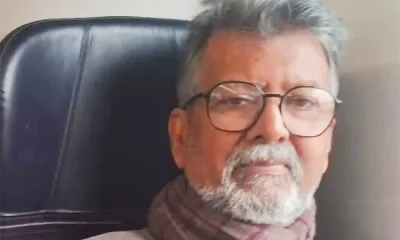
 News5 days ago
News5 days agoCyclone Ditwah leaves Sri Lanka’s biodiversity in ruins: Top scientist warns of unseen ecological disaster
-

 Features7 days ago
Features7 days agoThe Catastrophic Impact of Tropical Cyclone Ditwah on Sri Lanka:
-

 News6 days ago
News6 days agoRising water level in Malwathu Oya triggers alert in Thanthirimale
-
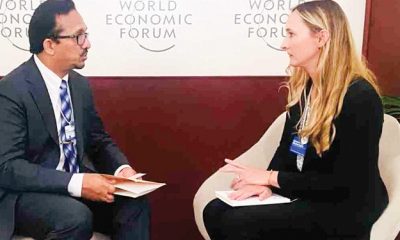
 Features4 days ago
Features4 days agoHandunnetti and Colonial Shackles of English in Sri Lanka
-
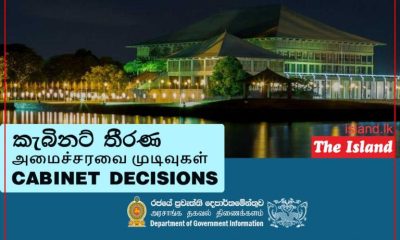
 Business3 days ago
Business3 days agoCabinet approves establishment of two 50 MW wind power stations in Mullikulum, Mannar region
-

 Business6 days ago
Business6 days agoSri Lanka betting its tourism future on cold, hard numbers













